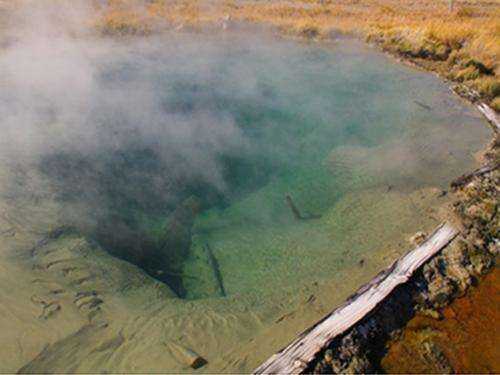Elucidating extremophilic 'microbial dark matter'

Genomes from novel lineages of bacteria and archaea in extreme environments have become accessible through techniques such as metagenomics and single-cell genomics.
Applying single-cell genomics and metagenomics toward uncultivated microbes in extreme environments has allowed researchers to gain insights into the true breadth of microbial diversity on and around the planet, and the findings can lead to applications in a number of fields from bioenergy to bioremediation.
To learn more about the true breadth of microbial diversity in, on, and around the planet, the U.S. Department of Energy Joint Genome Institute (DOE JGI), a DOE Office of Science user facility, has been applying single-cell genomics and metagenomics to uncultivated and uncultivable microorganisms. The ability to study an uncultivated microbial community through metagenomics provides a sense of how all the microbes interact with each other. In contrast, single-cell genomics provide researchers with the capability to study uncultivated microbes at the genome level even though there may not be enough DNA available for a more traditional approach.
Given the wide range of environments in which microbes thrive – from very hot to very cold habitats, and from freshwater to very salty ecosystems, there are multiple potential industrial and medical applications that could benefit from knowing how nature has adapted to such conditions. In a review article published online August 12, 2014 in Extremophiles, researchers from the University of Nevada Las Vegas (UNLV) and the DOE JGI revisit landmark studies that demonstrate how the application of single-cell genomics and metagenomics, particularly in tandem, have been instrumental to shedding light on the microbial branches of the tree of life.
For example, the team highlights one of the pioneering metagenomics studies involving the DOE JGI's collaboration with University of California, Berkeley's Jill Banfield in sequencing extremophiles isolated from an Environmental Protection Agency Superfund site at Iron Mountain, CA.
Another example focuses on work reported as part of the DOE JGI's Genomic Encyclopedia of Bacteria and Archaea-Microbial Dark Matter project. Among the many samples collected from various places around the world, the UNLV team highlighted their own contribution to the project, noting that single cells isolated from three sediment sites at the Great Boiling Spring in Nevada have led to the discovery of several candidate speces-level groups that may play roles in the carbon, nitrogen, and sulfur cycles.
"The time has never been better to apply existing metagenomics and single-cell genomics approaches to access genomes of novel microorganisms," the team wrote. "Rapid and valuable advancements in cultivation-independent approaches notwithstanding, we believe that genome-enabled cultivation is one of the most valuable outcomes of genomic exploration of uncultivated lineages."
More information: Hedlund BP et al. Impact of single-cell genomics and metagenomics on the emerging view of extremophile "microbial dark matter." Extremophiles. 2014 Sep;18(5):865-75. DOI: 10.1007/s00792-014-0664-7. Epub 2014 Aug 12.
Provided by DOE/Joint Genome Institute




















